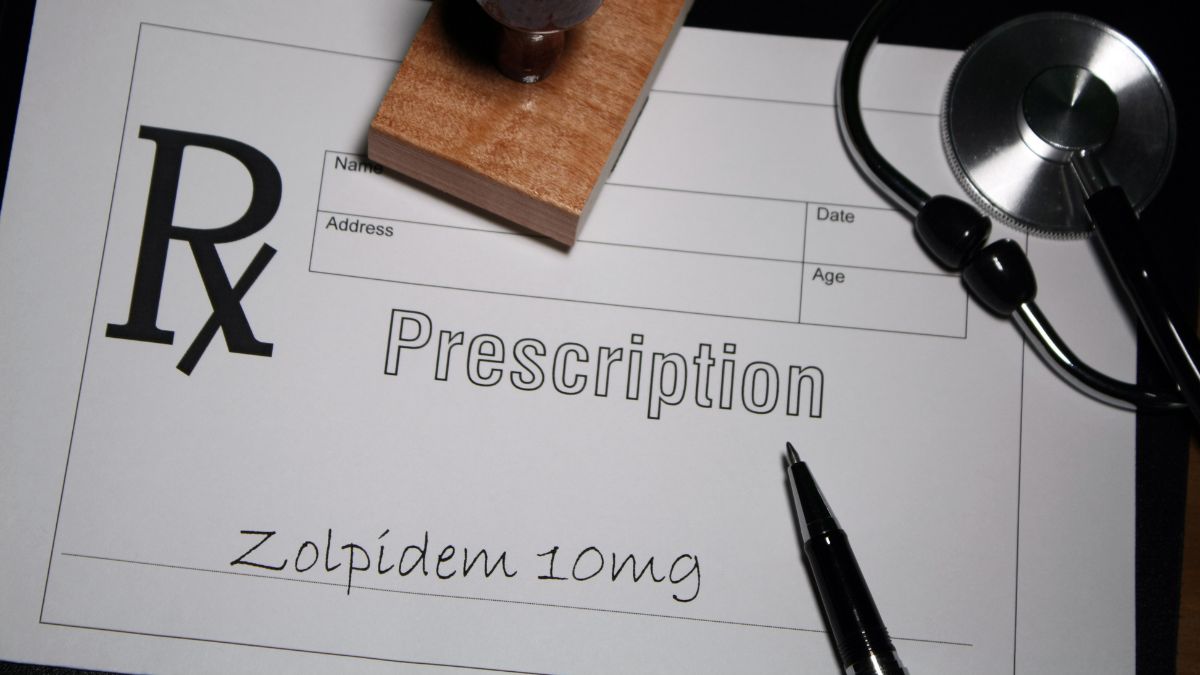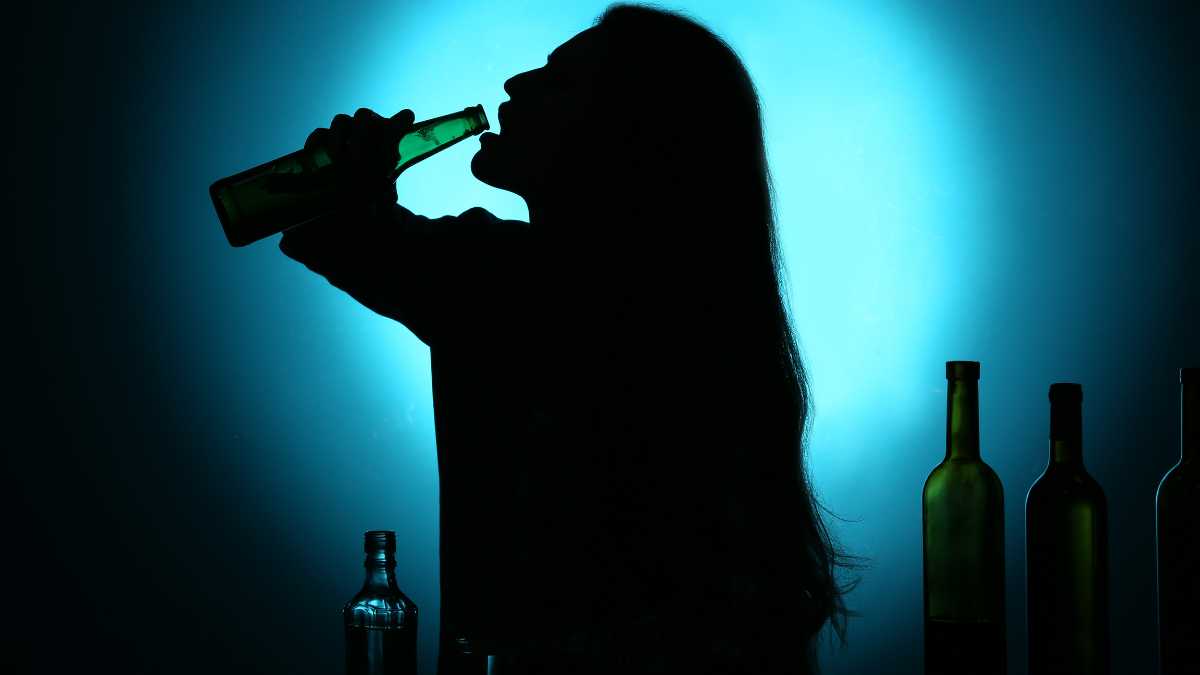What Happens When You Combine Ambien and Alcohol?
Sleep troubles are nothing uncommon; in today’s fast-paced world, where schedules vary from day to day, sleep is one of the most common factors in your life that can take a hit. While sleep-related disturbances can be treated in the right way, it is also all too common for people to turn to sleep aids like Ambien.
Ambien is a sedative, available in an immediate-release formulation that allows you to quickly fall asleep when you go to bed. Unfortunately, this means it also comes with a high potential for misuse and dependence. Still further, when Ambien is mixed with alcohol for enhanced effects, it can turn into a deadly combination that you always need to steer clear of. We shall explore why.
What Is Ambien (Zolpidem)?
Ambien is a popular brand name for a medication known as zolpidem. Zolpidem is commonly prescribed for those struggling with sleep disorders like insomnia, as it is a very powerful non-benzodiazepine sedative that acts on the central nervous system (CNS) and slows down the brain’s activity.
With an estimated 33% of the world’s population struggling with a poor quality of sleep, sleep aids or even sedatives like Ambien are prescribed by doctors. Depending on your sleep quality and troubles, your doctor will prescribe an appropriate dosage. When taken as per your doctor’s prescription and direction, the medication is safe. However, given the fact that Ambien can feel very pleasant and relaxing, it does come with a high addictive potential.
What becomes even more dangerous is when a potent sedative like Ambien is mixed with other substances that have very similar effects, like alcohol. These two substances can combine to give rise to overdose-like conditions, where they slow down the breathing rate and heart rate, leading to life-threatening and even fatal circumstances.
Why Do People Mix Ambien and Alcohol?
Ambien and alcohol belong to a class of drugs known as depressants. These drugs or substances slow down the CNS and give rise to pleasant effects - like feelings of relaxation and peace. Given that Ambien and alcohol are very similar in their functioning and effects, mixing them together enhances the outcomes of both. This is known as potentiation, where both substances reinforce each other’s effects and lead to stronger, intense outcomes - like a relaxed mind, drowsiness, and, of course, sleep.
While it may be pleasant and relaxing at the outset, this combination is deadly. Combining the two is never safe. So, if you have been prescribed Ambien and are used to drinking frequently (or even occasionally), have a detailed conversation about this with your doctor and follow their instructions to a tee. Drinking while on Ambien can lead to severe side effects and there is always the risk of an overdose.
Call Design for Recovery to Begin Your Healing Journey!
Reach out to our team to discuss sober living options and next steps toward a healthier routine.
How Ambien and Alcohol Interact in the Body?
When you are on Ambien, you must avoid drinking. Or, even if you have consumed a drink or more during the day, you must avoid taking Ambien. Ambien and alcohol have very similar effects, and alcohol can interact with the medication zolpidem in such a way that it can amplify its unwanted side effects like drowsiness, lightheadedness, and lowered focus. In fact, some may even experience cognitive dysfunctions like impaired thinking and judgment.
While Ambien is often mixed with alcohol for stronger, enhanced effects, both Ambien and alcohol are habit-forming. So, as your tolerance builds, you tend to consume them in larger quantities, leading to cognitive, respiratory, and liver damage. This can give rise to life-threatening circumstances and even death. In fact, the National Institute on Alcohol Abuse and Alcoholism (NIAAA) reports that mixing alcohol with sedatives like zolpidem can even increase the chances of suicide-related thoughts and behaviors.
Risks and Dangers of Mixing Ambien with Alcohol
While we understand that mixing Ambien with alcohol is a bad idea for overall health and well-being, here are the very real risks and dangers that come with this combination:
- Increased drowsiness
- Lowered focus
- Slowed speech
- Increased chances of accidents, like falling down
- Lightheadedness and fainting
- Delirium
- Intense withdrawal symptoms
- Low breathing rate and heart rate
- Overdose.
Long-Term Effects of Mixing Alcohol and Sleep Medications
Mixing alcohol with sleep medications like Ambien is widespread. Alcohol increases the sedative effects of sleep medications and gives rise to feelings of heightened relaxation and peace, but it also does leave long-lasting and severely damaging effects as well. Some of the most common ones you need to be aware of are as follows:
- Decreased quality of sleep
- Sleep conditions, like sleep-eating, sleepwalking, and sleep-driving
- Suppression of the central nervous system
- Impaired cognitive functioning, like impaired judgment and memory
- Irreversible liver damage
- Increased risk of polysubstance use disorders - to both alcohol and sleeping pills
- Increased risk of overdose
- Increased risk of death.
Contact Design for Recovery Today!
Fill out our quick form to connect with a peer mentor and learn how our sober living community supports accountability, structure, and personal growth in recovery.
Warning Signs of Abuse and Addiction
Ambien and alcohol are both habit-forming substances, so they have a high potential for misuse, addiction, and dependence. If you or a loved one is struggling with this polysubstance use, here are some warning signs to watch out for - which can help in early detection and intervention:
- Using Ambien and alcohol more frequently and for a prolonged period of time than you intend to.
- Strong cravings and urges to mix and use Ambien and alcohol together.
- Repeated yet unsuccessful attempts to quit Ambien and alcohol on your own.
- Spend a lot of time acquiring and using Ambien and alcohol. For instance, you may go doctor shopping (visit multiple doctors) to get prescriptions for Ambien.
- Continuing to use Ambien and alcohol despite their adverse effects on your physical, mental, and social health.
- Prioritize Ambien and alcohol use over other things in life, including studies/jobs, family, and other responsibilities.
- Use Ambien and alcohol in high-risk conditions.
- Develop tolerance for Ambien and alcohol, which means you begin to use them in increasing quantities to achieve the desired effect.
- Experience withdrawal symptoms in case of reducing or quitting Ambien and alcohol abruptly.
If you or a loved one is experiencing any of these symptoms, it is possible that you are struggling with a polysubstance use disorder, and you can benefit from comprehensive professional care.
What to Do in Case of Overdose or Emergency?
An overdose is a huge risk if you or a loved one drinks while on Ambien. Therefore, it is highly recommended to avoid using these substances together at any given point in time. However, it is always good to be aware of the signs of an overdose, as it is an emergency condition that needs immediate medical attention. Here are some commonly recognizable signs of an Ambien and alcohol overdose:
- Disorientation
- Lack of responsiveness or a loss of consciousness
- Labored breathing and slowed heart rate
- Seizures
- Coma.
Treatment Options for Ambien and Alcohol Addiction
Mixing Ambien and even other zolpidem-based medications with alcohol is not safe and always risks a substance use disorder (addiction), overdose, and even death. Therefore, it is safe and highly recommended to seek intervention in case you or a loved one is struggling with Ambien and alcohol misuse or abuse. With holistic and personalized care, full recovery is possible, and a sober future is right within your reach.
Ambien and alcohol use is known as polysubstance use, and it can be treated in both residential and outpatient settings. Typically, the first step to treatment will be a medically supervised detoxification (detox), where the substances will be gradually tapered off from the body under safe and controlled conditions to minimize and manage cravings and withdrawal symptoms.
Detox, however, cannot fix the root of Ambien and alcohol use. So, psychotherapeutic interventions like the Matrix Model are used. This involves:
Motivational Interviewing:
Motivational Interviewing or MI, which removes ambivalence and instills motivation to change substance use-related behaviors and journey toward healing and recovery.
Cognitive Behavioral Therapy or CBT:
Cognitive behavioral therapy (CBT), which seeks to change the underlying thinking patterns leading to polysubstance use and equip you with productive coping skills to tackle triggers and other life stressors.
Contingency Management:
Contingency management, which is a behavioral technique that reinforces desirable behaviors, like undergoing detox, attending therapy, abstaining from Ambien and alcohol use, and passing drug tests.
12-Step Recovery Programs and Peer Support Groups:
12-step recovery programs and informal peer support groups like Alcoholics Anonymous, which seek to provide a safe environment where you can share and learn from shared experiences with those on similar recovery journeys as you.
How Design for Recovery Can Help?
If you or a loved one is struggling with Ambien and alcohol, it can be difficult to see the light at the end of the tunnel from this polysubstance use. It can be challenging and even detrimental to try and quit this on your own, but you do not have to. The care you need and deserve is always available for you.
When dealing with polysubstance use, it is beneficial to seek integrated care options. Design For Recovery is a sober living community for young men located in Los Angeles. It is designed to meet your specific recovery needs and goals. We offer clinical support and comprehensive support services to empower you to achieve sobriety and lead a life full of joy and meaning. Our staff and sober community are always there for you in this journey, so you will not feel lonely or overwhelmed at any point in time.
- What Happens When You Combine Ambien and Alcohol?
- What Is Ambien (Zolpidem)?
- Why Do People Mix Ambien and Alcohol?
- How Ambien and Alcohol Interact in the Body?
- Risks and Dangers of Mixing Ambien with Alcohol
- Long-Term Effects of Mixing Alcohol and Sleep Medications
- Warning Signs of Abuse and Addiction
- What to Do in Case of Overdose or Emergency?
- Treatment Options for Ambien and Alcohol Addiction
- How Design for Recovery Can Help?
Begin Lasting Sobriety Now!
https://www.drugs.com/ambien.html
https://www.ncbi.nlm.nih.gov/books/NBK20360/
https://pubmed.ncbi.nlm.nih.gov/7615484/
https://www.drugs.com/food-interactions/zolpidem,ambien.html
https://www.helpguide.org/wellness/sleep/sleep-statistics
https://www.niaaa.nih.gov/health-professionals-communities/core-resource-on-alcohol/alcohol-medication-interactions-potentially-dangerous-mixes







Written By
David Beasley